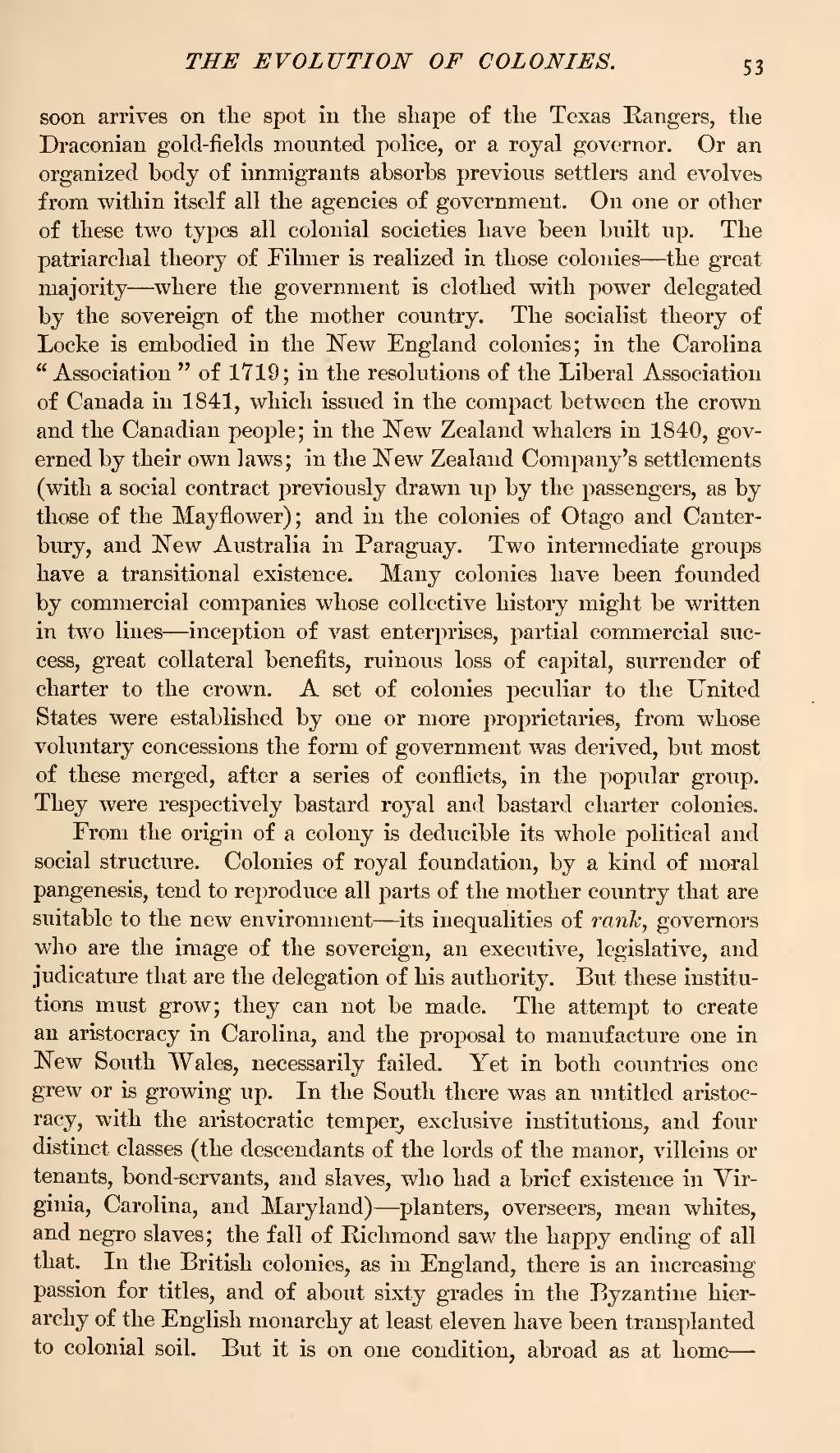soon arrives on the spot in the shape of the Texas Rangers, the Draconian gold-fields mounted police, or a royal governor. Or an organized body of immigrants absorbs previous settlers and evolves from within itself all the agencies of government. On one or other of these two types all colonial societies have been built up. The patriarchal theory of Filmer is realized in those colonies—the great majority—where the government is clothed with power delegated by the sovereign of the mother country. The socialist theory of Locke is embodied in the New England colonies; in the Carolina "Association" of 1719; in the resolutions of the Liberal Association of Canada in 1841, which issued in the compact between the crown and the Canadian people; in the New Zealand whalers in 1840, governed by their own laws; in the New Zealand Company's settlements (with a social contract previously drawn up by the passengers, as by those of the Mayflower); and in the colonies of Otago and Canterbury, and New Australia in Paraguay. Two intermediate groups have a transitional existence. Many colonies have been founded by commercial companies whose collective history might be written in two lines—inception of vast enterprises, partial commercial success, great collateral benefits, ruinous loss of capital, surrender of charter to the crown. A set of colonies peculiar to the United States were established by one or more proprietaries, from whose voluntary concessions the form of government was derived, but most of these merged, after a series of conflicts, in the popular group. They were respectively bastard royal and bastard charter colonies.
From the origin of a colony is deducible its whole political and social structure. Colonies of royal foundation, by a kind of moral pangenesis, tend to reproduce all parts of the mother country that are suitable to the new environment—its inequalities of rank, governors who are the image of the sovereign, an executive, legislative, and judicature that are the delegation of his authority. But these institutions must grow; they can not be made. The attempt to create an aristocracy in Carolina, and the proposal to manufacture one in New South Wales, necessarily failed. Yet in both countries one grew or is growing up. In the South there was an untitled aristocracy, with the aristocratic temper, exclusive institutions, and four distinct classes (the descendants of the lords of the manor, villeins or tenants, bond-servants, and slaves, who had a brief existence in Virginia, Carolina, and Maryland)—planters, overseers, mean whites, and negro slaves; the fall of Richmond saw the happy ending of all that. In the British colonies, as in England, there is an increasing passion for titles, and of about sixty grades in the Byzantine hierarchy of the English monarchy at least eleven have been transplanted to colonial soil. But it is on one condition, abroad as at home—
